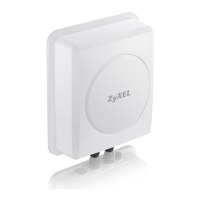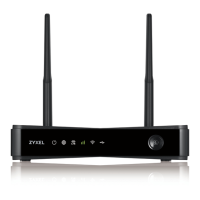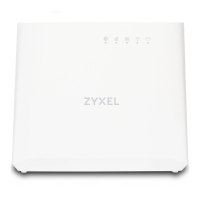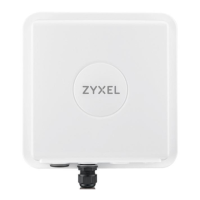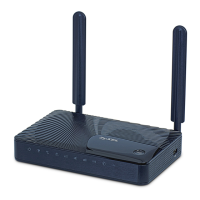LTE Series User’s Guide
162
CHAPTER 10
Network Address Translation
(NAT)
10.1 Overview
NAT (Network Address Translation - NAT, RFC 1631) is the translation of the IP address of a host in a
packet, for example, the source address of an outgoing packet, used within one network to a different
IP address known within another network.
10.1.1 What You Can Do in this Chapter
• Use the Port Forwarding screen to configure forward incoming service requests to the servers on your
local network (Section 10.2 on page 163).
• Use the Port Triggering screen to add and configure the Zyxel Device’s trigger port settings (Section
10.3 on page 166).
• Use the DMZ screen to configure a default server (Section 10.4 on page 169).
• Use the ALG screen to enable or disable the SIP ALG (Section 10.5 on page 170).
• Use the Address Mapping screen to enable and disable the NAT Address Mapping in the Zyxel
Device(Section 10.6 on page 171).
• Use the Sessions screen to limit the number of concurrent NAT sessions each client can use(Section
10.7 on page 173).
10.1.2 What You Need To Know
The following terms and concepts may help as you read this chapter.
Inside/Outside and Global/Local
Inside/outside denotes where a host is located relative to the Zyxel Device, for example, the computers
of your subscribers are the inside hosts, while the web servers on the Internet are the outside hosts.
Global/local denotes the IP address of a host in a packet as the packet traverses a router, for example,
the local address refers to the IP address of a host when the packet is in the local network, while the
global address refers to the IP address of the host when the same packet is traveling in the WAN side.
NAT
In the simplest form, NAT changes the source IP address in a packet received from a subscriber (the
inside local address) to another (the inside global address) before forwarding the packet to the WAN
side. When the response comes back, NAT translates the destination address (the inside global address)
back to the inside local address before forwarding it to the original inside host.

